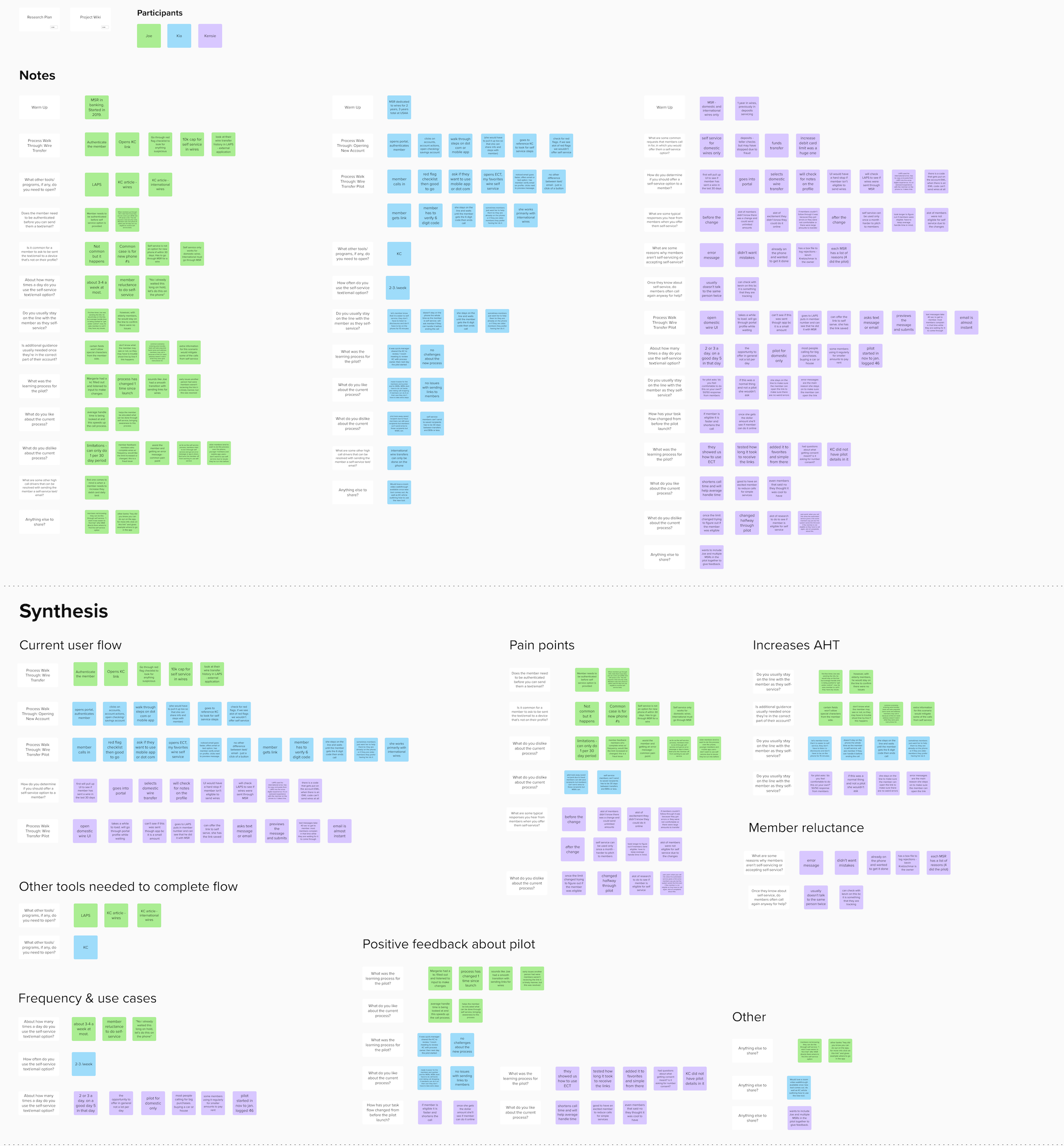

A company report showed that a large volume of contact center calls were simple service requests that callers could easily resolve on their mobile app instead. An initial test-and-learn experiment revealed that when call representatives taught callers how to navigate their mobile app, an average of 55 seconds per call was saved and callers were unlikely to call again for the same service.
To build upon momentum from the test-and-learn, I designed a new tool for call representatives that provides a quick, seamless experience to search and send specific SMS links to callers, deep linking them into their service request within their mobile app.
Note: Details have been redacted and graphics altered to comply with client privacy agreements.
Call representatives currently have to navigate a lengthy process document to help callers self-service and that increases their average call time. Long call times have a negative affect on their performance and compensation.

Research interviews:
Despite the tight timeline, I was determined to make sure we were solving the right problems, as well as gain additional insight from actual users involved in the test-and-learn experiment. I planned and facilitated informational interviews with three call center reps who were involved in the test-and-learn.
Synthesized insights:
The interviews revealed that:
1. The user flow in the test-and-learn was easy to understand and seamlessly integrated into the everyday flow of the reps.
2. There was friction present when the rep had to spend extra time figuring out if callers were even eligible to participate in the SMS service.
3. Some callers were reluctant to participate and simply wanted the rep to complete the request on the call.
Proposed Next Steps:
Our product owner decided that influencing caller behavior (insight #3) was not within scope for MVP, so we decided to address insight #2 by mapping out business rules and designing a solution that would eliminate the need for reps to double or triple check SMS eligibility.


Current state versus future state
Mapping out user flows in a live workshop allowed me to level set and align the basic tool functionality with product owners and our IT team. From there, I began iterating on multiple versions of the tool's user interface.

Screens were reviewed with:
- Internal design teams
- Content designers
- Design system team
Testing with real users:
After building an interactive prototype, I conducted usability testing sessions with 5 different call reps to test ease of use as well as identify potential points of friction.
Quick wins were addressed before production, and out of scope suggestions were documented as a future resource.

In the 3 months post launch, call reps were able to use this tool for 5 different servicing requests.
Immediate business impacts:
- $170K in annual expense savings
- Reduced average call time by 15 seconds
- Reduced repeat callers by 20%
Projected qualitative impacts:
- Empowered callers who can complete self-service -> Positive company reputation and repeat business
- Empowered call reps who can provide seamless service -> Decreased stress and improved performance reviews
📍 Currently living and learning on the ancestral homeland of the Plains Miwok, who lived as sovereign caretakers of the land and the waterways since time immemorial. Click here to learn whose land you are on.
© 2020-2025 CREATEWITHMI